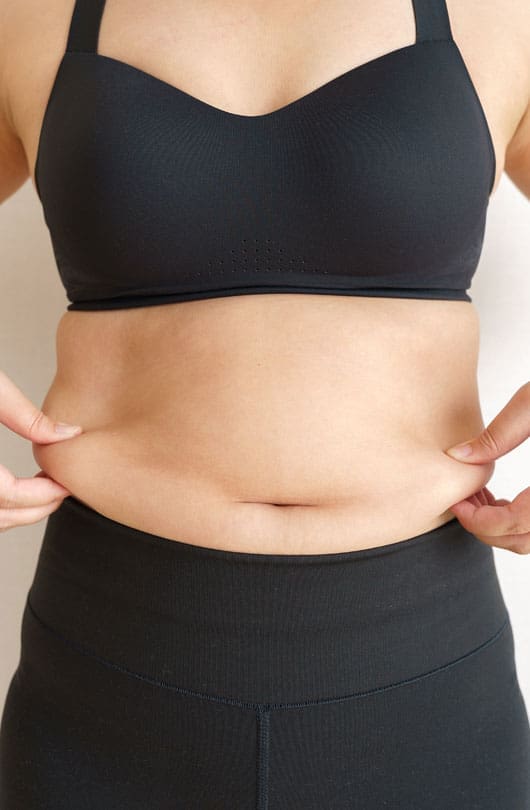This condition is a body contouring concern that typically arises because of weight gain, significant weight loss and following pregnancy. The medical term for this condition is panniculus or abdominal pannus.
The primary cause of an apron flap is the stretching of skin and underlying tissues due to the accumulation of excess fat, often seen in cases of obesity or significant weight gain. When a person loses a substantial amount of weight, either through diet, exercise, or surgical procedures (bariatric surgery) , the skin may not retract fully to accommodate the reduced volume, resulting in the appearance of an apron-like fold. If this concern develops post-pregnancy, it’s often due to the stretching of abdominal tissues during pregnancy, which results in excess loose skin. Other contributing factors such as diastasis recti, separation of abdominal muscles, and the scar from a caesarean section can also accentuate the appearance of an apron.
The impact of an apron flap on appearance and body image can be significant, with individuals feeling this concern leads to challenges related to body contour and physical appearance. The excess skin and fat can affect the fit of clothing, limit clothing choices, and create discomfort due to chafing and hygiene concerns. Beyond the physical aspects, the presence of an apron flap can lead to self-consciousness and body image dissatisfaction.
In addition to aesthetic concerns, an apron flap may contribute to functional issues, including interference with mobility, exercise, and maintaining proper hygiene. In some cases, it may lead to skin irritation and infections within the folds.
Addressing an apron flap often involves surgical intervention known as a panniculectomy or abdominoplasty (tummy tuck). These procedures aim to remove the excess skin and fat, resulting in a smoother and more contoured abdominal appearance.










